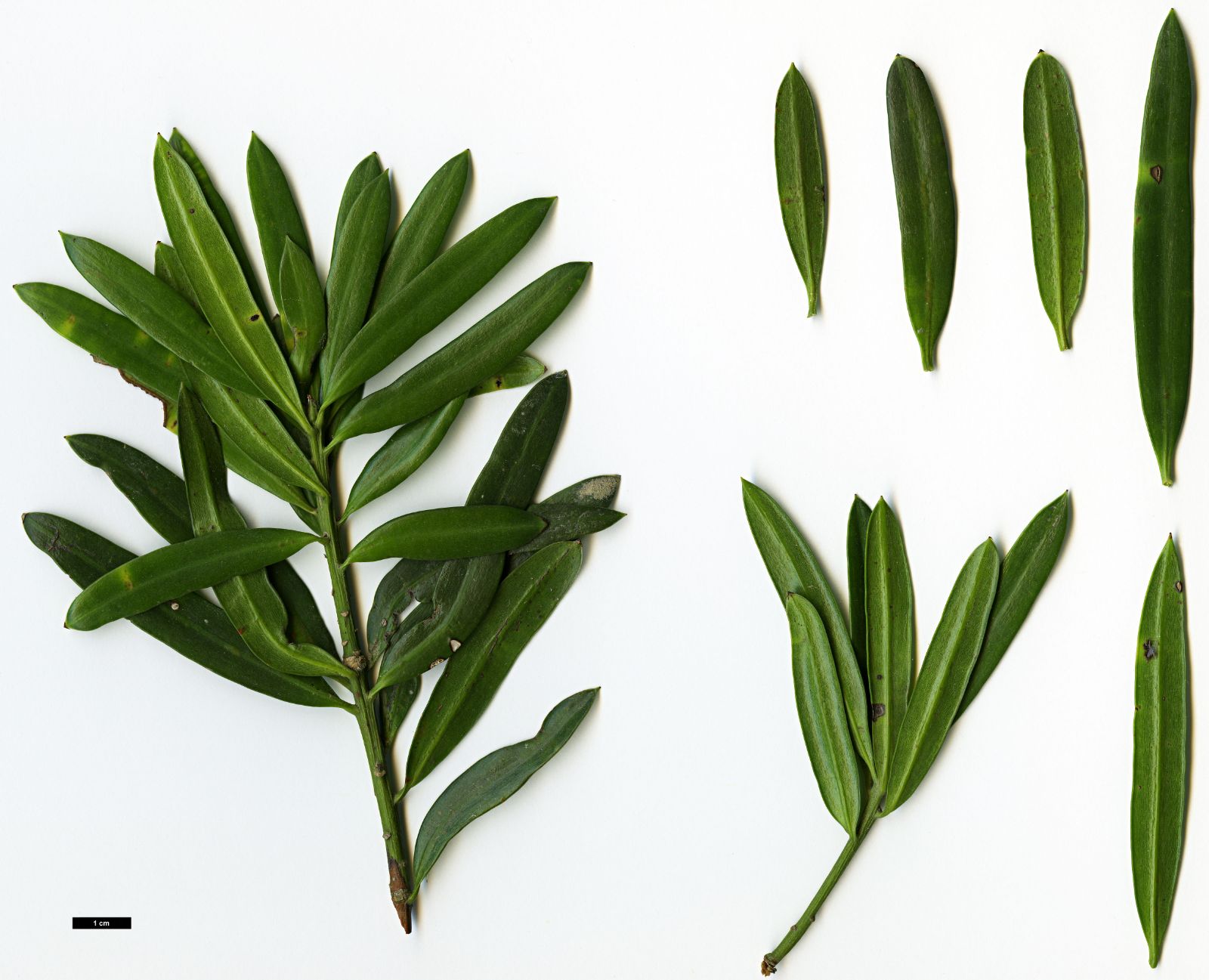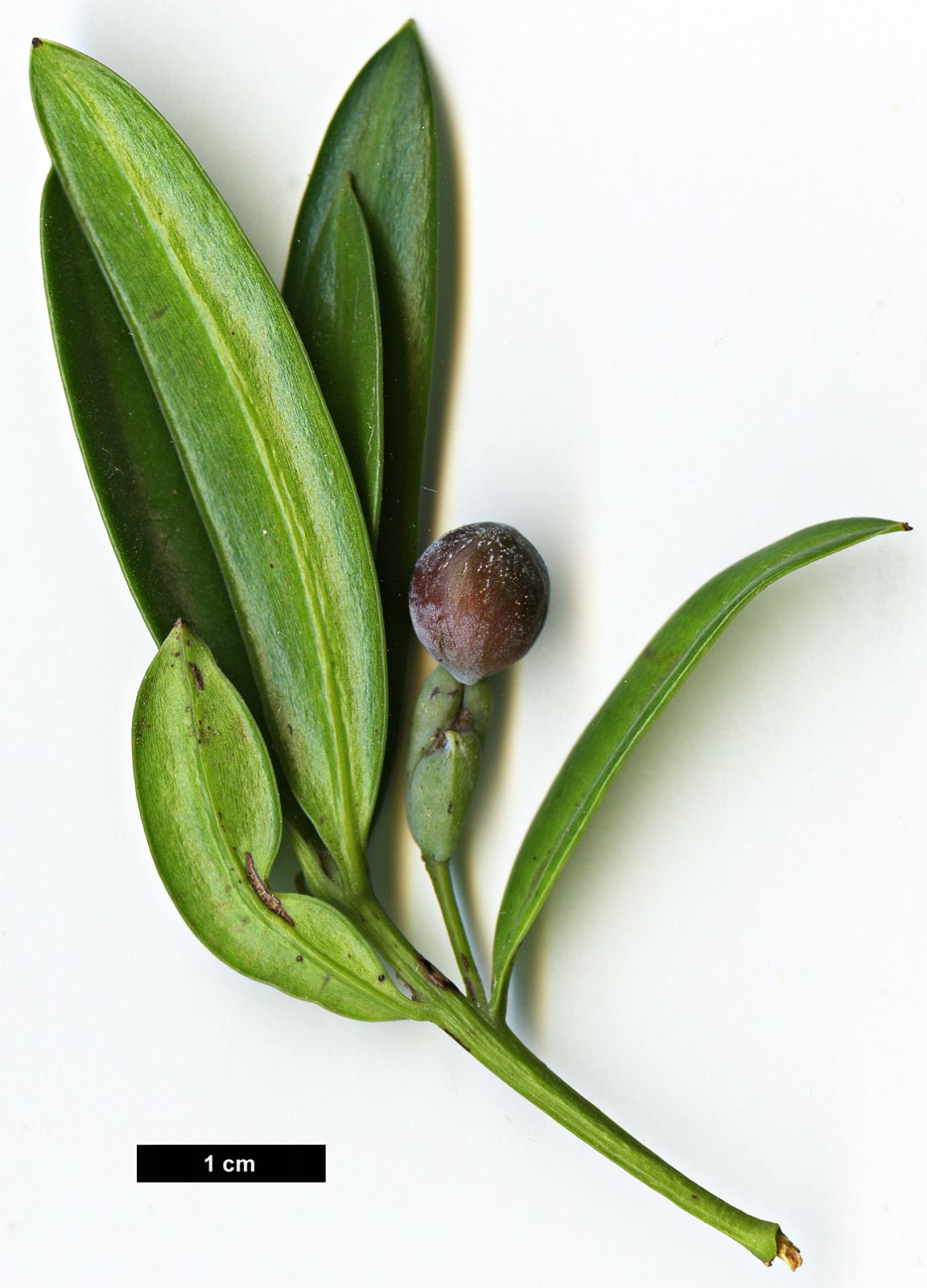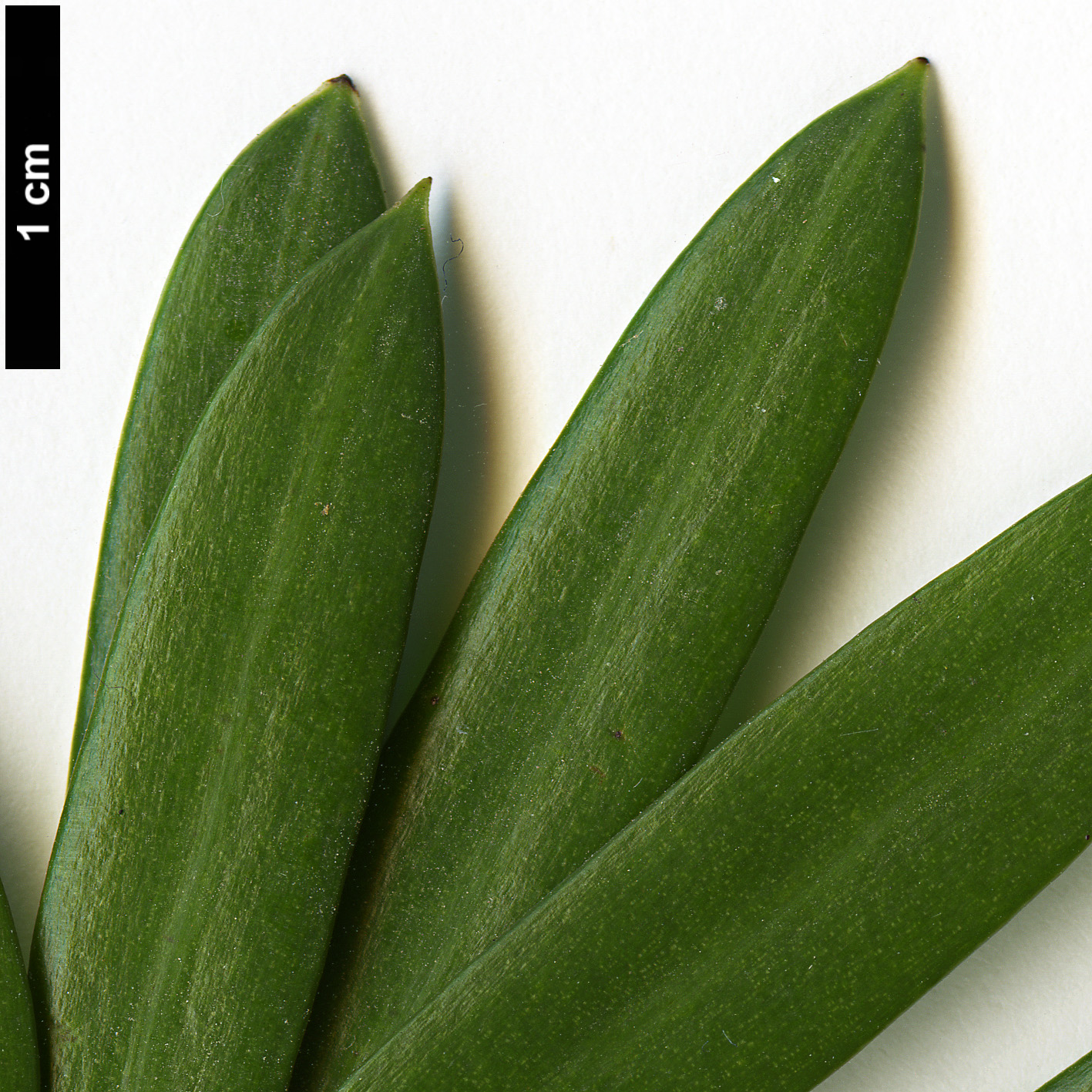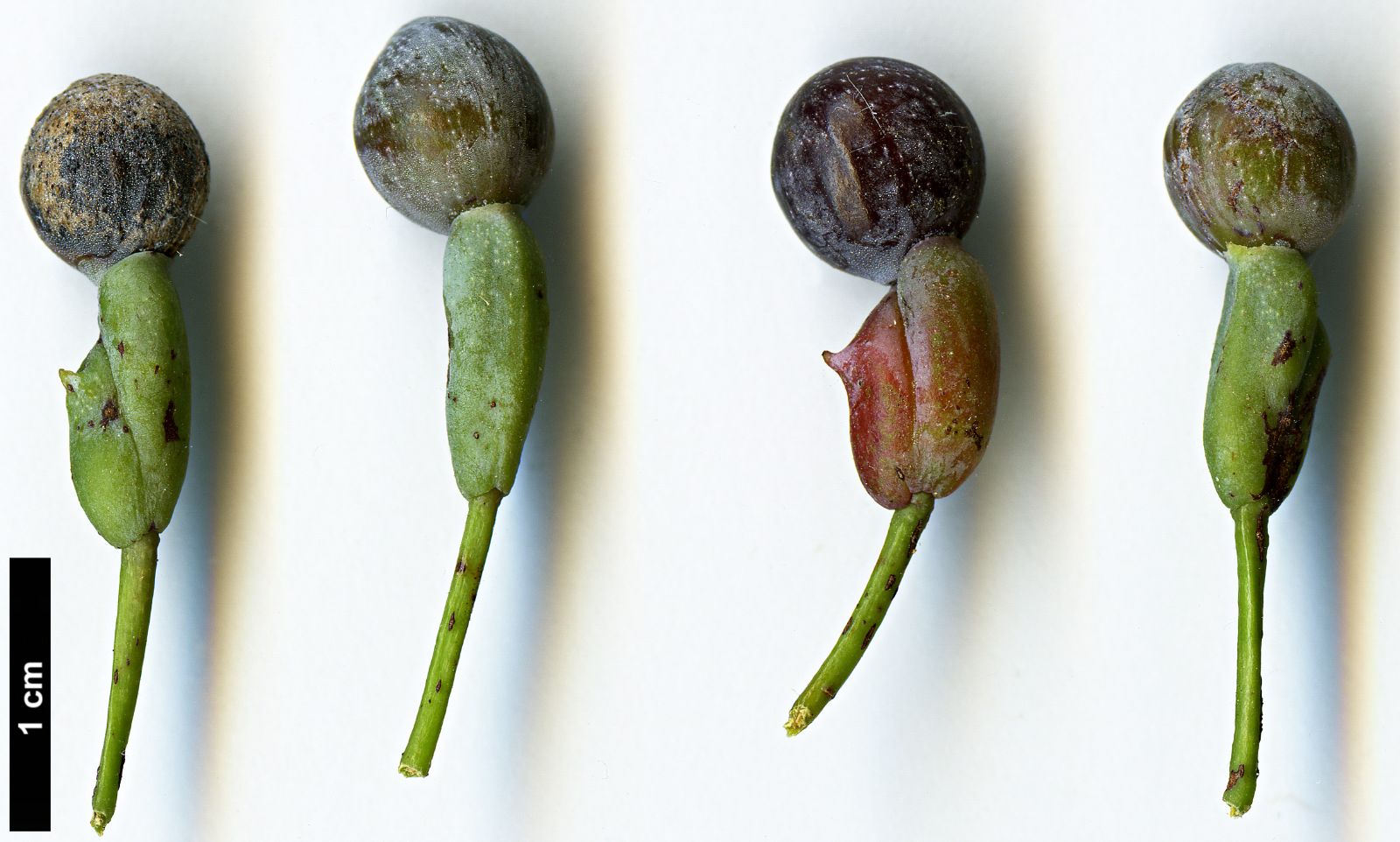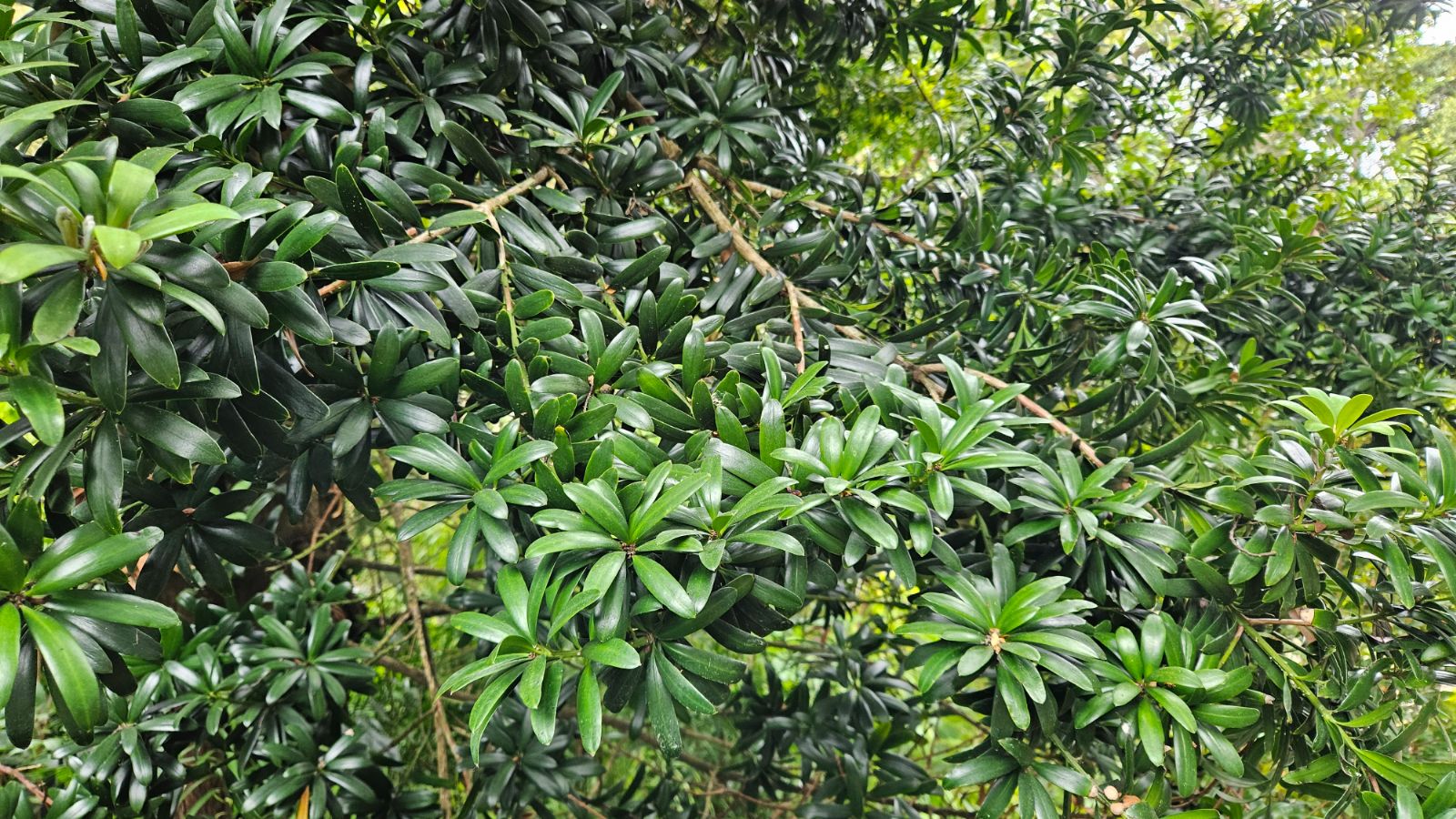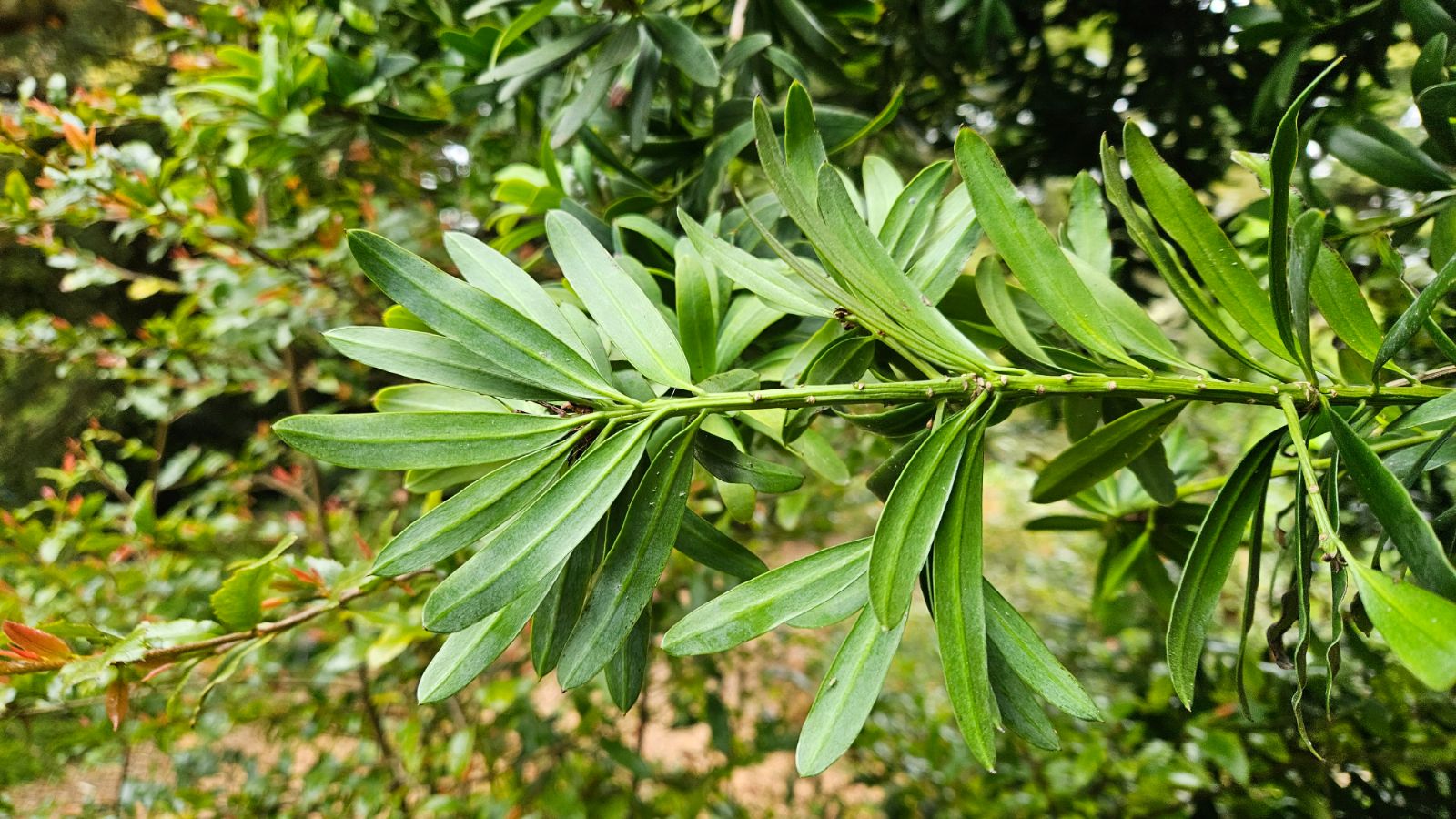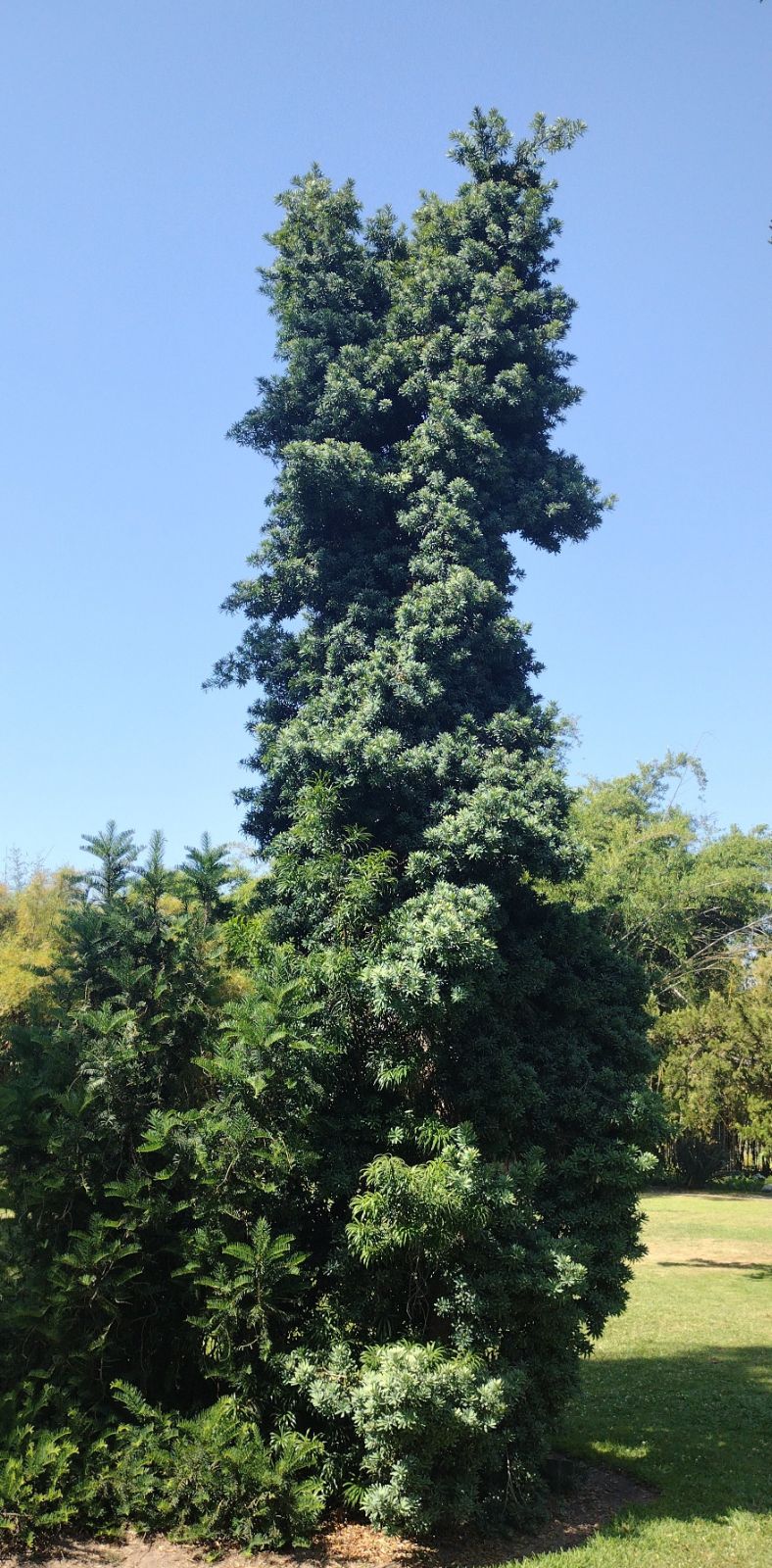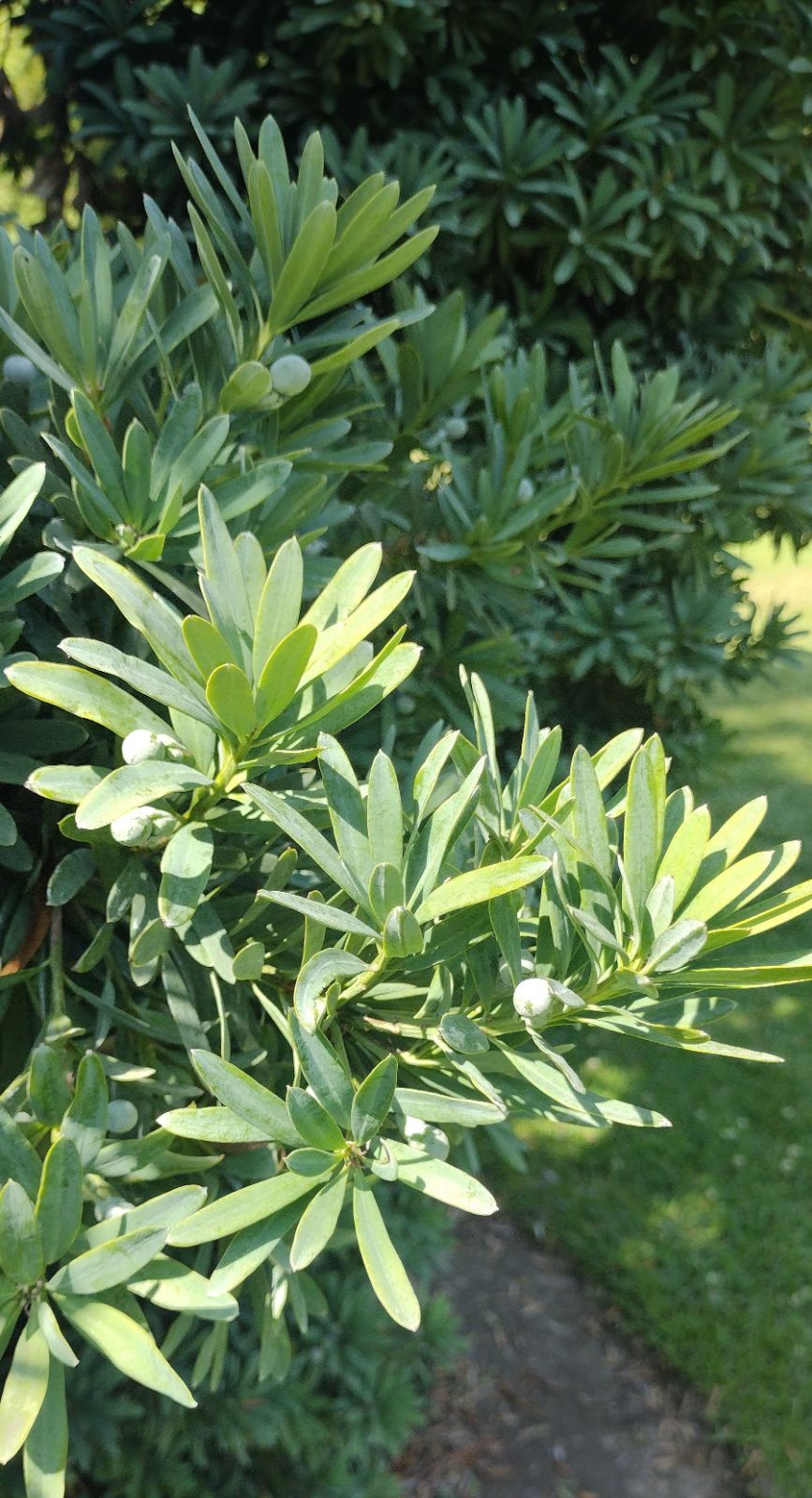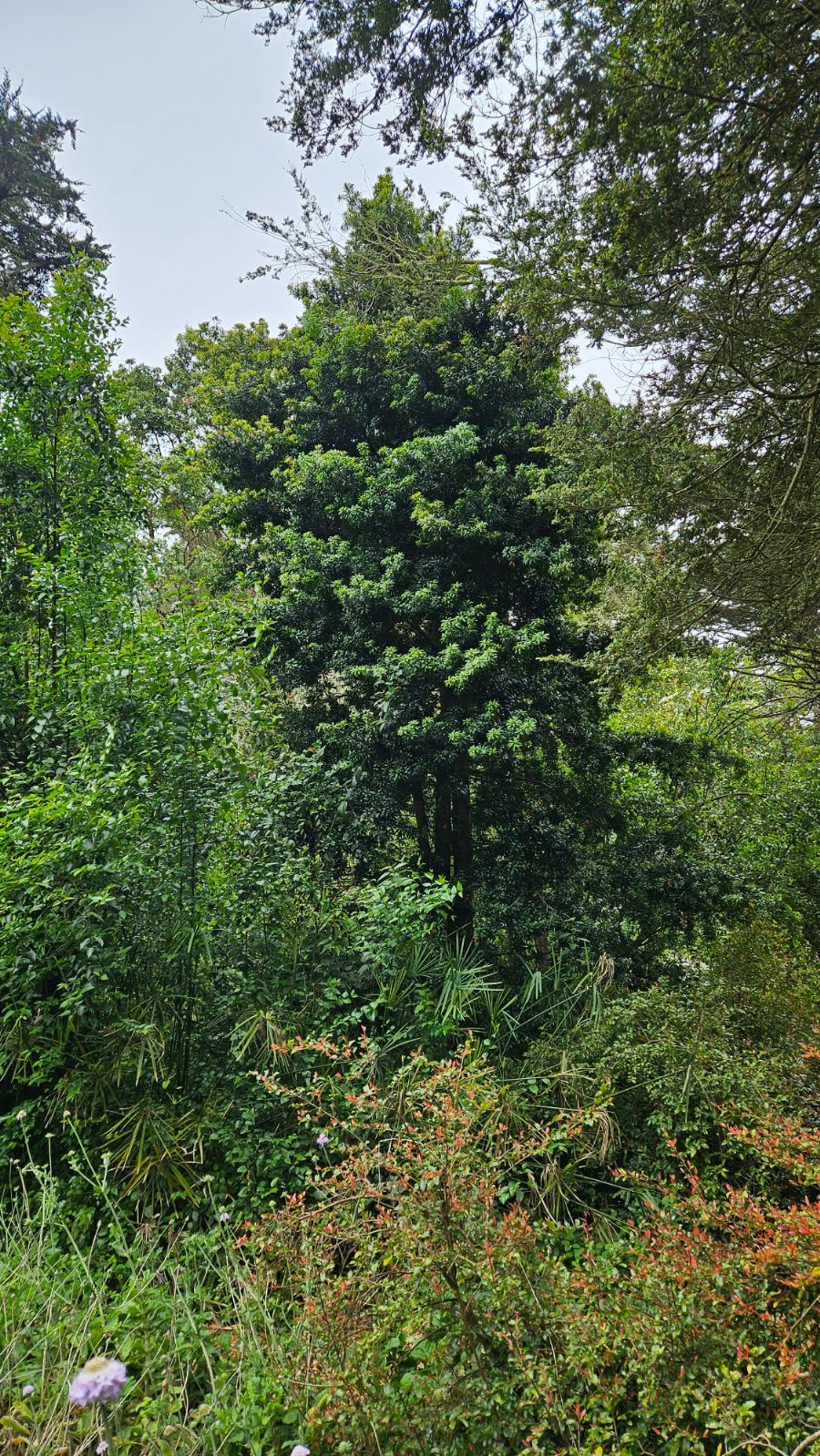Podocarpus latifolius
Sponsor
Kindly sponsored by
The British Conifer Society in memory of Derek Spicer VMM, founder member.
Credits
Tom Christian (2023)
Recommended citation
Christian, T. (2023), 'Podocarpus latifolius' from the website Trees and Shrubs Online (treesandshrubsonline.
Genus
Common Names
- Broad-leaved Yellowwood
- Real Yellowwood
- Geelboom
- Mogôbagôba
Synonyms
- Podocarpus latior (Pilg.) Gaussen
Other taxa in genus
- Podocarpus acutifolius
- Podocarpus acutifolius × lawrencei
- Podocarpus acutifolius × nivalis
- Podocarpus acutifolius × totara
- Podocarpus brassii
- Podocarpus costalis
- Podocarpus drouynianus
- Podocarpus elatus
- Podocarpus elongatus
- Podocarpus guatemalensis
- Podocarpus henkelii
- Podocarpus laetus
- Podocarpus laetus × nivalis
- Podocarpus lambertii
- Podocarpus lawrencei
- Podocarpus lawrencei × nivalis
- Podocarpus macrophyllus
- Podocarpus matudae
- Podocarpus milanjianus
- Podocarpus nakaii
- Podocarpus neriifolius
- Podocarpus nivalis
- Podocarpus nubigenus
- Podocarpus oleifolius
- Podocarpus parlatorei
- Podocarpus pilgeri
- Podocarpus pseudobracteatus
- Podocarpus salignus
- Podocarpus spinulosus
- Podocarpus totara
Tree 20–30 m in forests with a straight trunk to 3 m dbh, becoming fluted and twisted with age; shrubby in exposed sites in mountains. Bark thin, light brown and smooth when young, becoming dark grey, fissured with age, exfoliating in long strips. Branches relatively short; crown narrow in forest trees, low and spreading in shrubby plants. Terminal buds obtuse, 2–3.5 mm wide, with narrowly triangular, acuminate outer scales, sometimes recurved. Leaves of established trees elliptic to linear, (2–)3.5–12 × 0.5–1.8 cm, largest on shaded shoots (much larger on juvenile plants, to 17 × 2 cm), straight to slightly curved, base tapering, short-petiolate, margins ± parallel in middle of lamina of longest leaves, minutely revolute, apex abruptly narrowing to an obtuse or mucronate to apiculate apex; upper surface dark or glaucous green with an inconspicuous midrib in the lower half; lower surface dull green with a more prominent midrib, with two stomatal bands either side (a few broken stomatal lines occasionally present on upper leaf surface). Pollen cones solitary, rarely in pairs, sessile or very short-pedunculate, cylindrical, 20–30 mm long at maturity. Seed cones solitary on slender peduncles 5–15 mm long, with 2 bracts which fuse to become a swollen, fleshy receptacle, 8–14 × 8–12 mm, glaucous green at first, ripening pruinose purple. Seed including the epimatium ovoid to subglobose, glaucous green at first, maturing purple, 7–11 × c. 10 mm. (Farjon 2017; Grimshaw & Bayton 2009).
Distribution South Africa Eastern Cape north to Limpopo Province, Western Cape
Habitat Moist montane and coastal forests.
USDA Hardiness Zone 9
RHS Hardiness Rating H3
Conservation status Least concern (LC)
Formerly included within Podocarpus milanjianus, widespread in tropical Africa, Podocarpus latifolius has for many years been considered endemic to South Africa where it is distributed from the Cape Provinces north to Limpopo (Farjon 2017). A recent study, however, has thrown the issue into question once again after molecular analyses of samples from across the range of both taxa found that only a single species could be supported (Migliore, Lézine & Hardy 2020). John Grimshaw has seen both in the wild and observed in New Trees that ‘The South African tree is certainly very distinct from that seen in East Africa, with shorter, more erect leaves’, perhaps as a consequence of which he also notes ‘Podocarpus latifolius lacks the elegance of P. henkelii and P. milanjianus, but is regarded as a valuable ornamental in South Africa and is probably tolerant of somewhat drier conditions than the others’ (Grimshaw & Bayton 2009).
The results of (one) modern scientific study notwithstanding, observable and ecological differences between P. latifolius and P. milanjianus could be interpreted to justify continued separation until further evidence is forthcoming, and this approach is adopted here. The perceived tolerance for drier conditions (not necessarily ‘dry’) may yet see growers seeking out P. latifolius (or South African provenances of P. milanjianus) as they adapt to a changing climate, especially in areas such as California and southern Europe. It has been cultivated in northern gardens for some years: County Park Nursery (Essex, UK) was offering it in 2003 (unpublished nursery list, March 2003) and Tom Hudson has established it at Tregrehan (Cornwall, UK) but notes it has been ‘difficult […] the attractively pink-flushed growth has tended to emerge in the winter months, whence it has been cut back by frost’; after a run of damaging winters it was sensibly deaccessioned, and material of another provenance planted to try again (Smith & Hudson 2017). P. latifolius was established in North America, albeit infrequently seen, by the late 2000s (Grimshaw & Bayton 2009). It has probably been overlooked by growers in favour of the smaller, hardier, but otherwise similar P. elongatus, which has several attractive glaucous forms which are seemingly lacking in P. latifolius as its leaves lack stomata on their upper surface (Grimshaw & Bayton 2009).
Podocarpus latifolius has been an extremely important timber species in its native South Africa, yielding a fine, even-grained wood widely used in construction and for railway sleepers during the colonial past, but with large trees now scarce it is primarily used in carpentry and furniture making. It has been declared South Africa’s National Tree and is now largely protected, and frequently planted in gardens (Farjon 2017).


